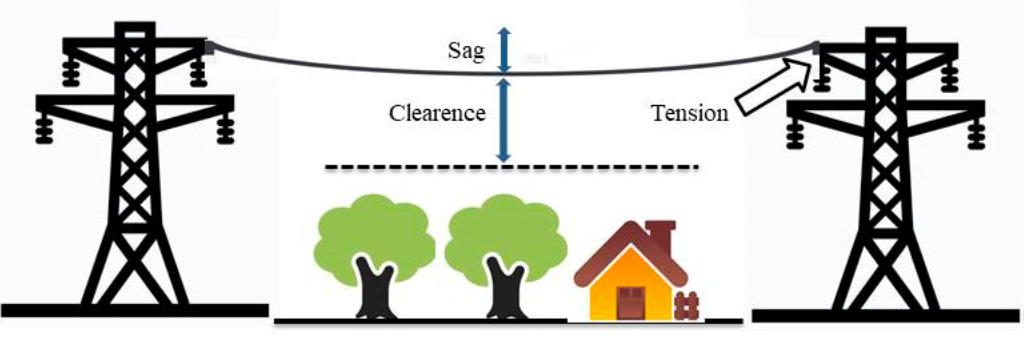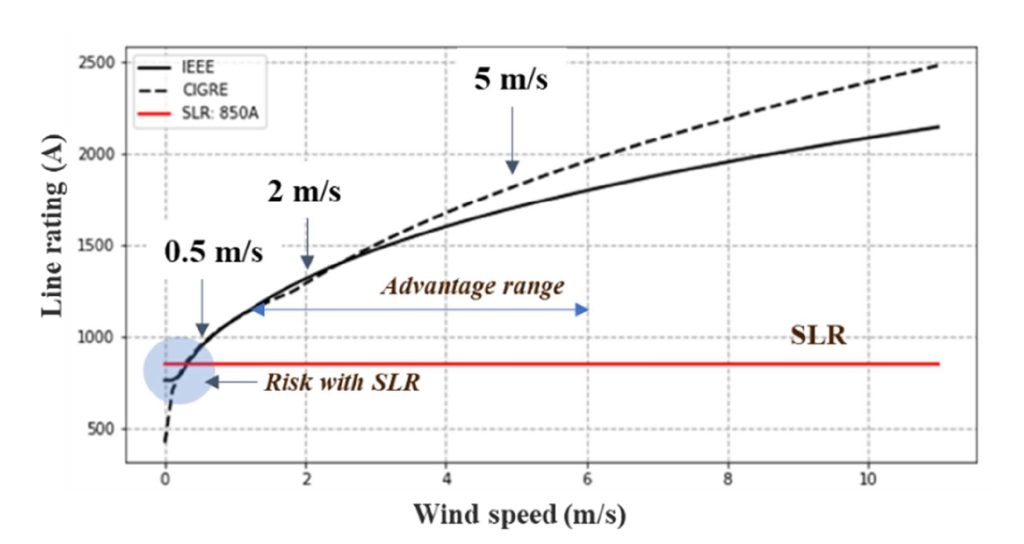Dynamic Thermal Rating: An Introduction

For considering the thermal limit of the overhead conductor we have to consider two things.
- Maximum conductor temperature: a given cable feature, and we should not cross this limit.
- Minimum clearance rule, that is we must not exceed the maximum sag limit.
If we operate the line traditionally, we will account for two restrictions and run on a static thermal rating. The worst environmental circumstances determine these ratings. In other words, we account for the absence of wind, the highest possible ambient temperature, and the absence of clouds. These restrictions are only in place for safety reasons, and most of the time the environmental condition are better than that. This implies that there will be minimal wind, some clouds, or a little dip in temperature. The foundation of dynamic thermal (DTR) rating is the knowledge of these circumstances and the wise use of these available margins.
The conductor in thermal equilibrium as seen in the figure is impacted by solar radiation, ambient temperature, line load, and wind cooling. Since the transmission line is not in a lab, this equilibrium is always changing, thus if we want to do the dynamic thermal rating, we must take these changing factors into consideration. Thermal irradiance exists; it is present at least throughout the daytime and will have a minimal impact on the rating. As well as the ambient temperature goes up and down and it will also affect the rating.

The most important parameter is wind velocity because it has the massive cooling effect and it will give more gain in the ampacity. Generally while calculating static thermal rating (STR), the fixed velocity of 0.5m/s is considered. But when the wind velocity reaches about 5m/s the ampacity reaches about 1750 A as shown in the graph of certian type of ACSR conductor. So implementing the DTR, the ampacity of the conductor increases and we can transmit more power from the same line.
Traditionally, transmission capability is determined by using unfavorable weather conditions. DTR technology maximizes the ampacity of the conductor and hence increased the utilization of existing assets. Simple fixes for overloading and congestion issue include the construction of new transmission routes and the reinforcing of current electrical infrastructure. By employing the DTR technique, this issue may be solved by running existing grids with enhanced flexibility. The advantage over the STR methodology is that, DTR automatically enhances the power supply and grid hosting capacity.
References
- S. Karimi, P. Musilek, and A. M. Knight, “Dynamic thermal rating of transmission lines: A review,” Renewable and Sustainable Energy Reviews, vol. 91, pp. 600–612, 2018.
- S. Ghimire, “Necessary reforms on integrated nepal power system (inps) and role of government sector: Lessons to learn from developed countries,” in 2019 Second International Conference on Advanced Computational and Communication Paradigms (ICACCP). IEEE, 2019, pp. 1–5.
- `Guidelines for increased utilization of existing overhead transmission line,” in Proc. CIGRE Brochure, 2008.
- “IEEE Standard for Calculating the Current-Temperature Relationship of Bare Overhead Conductors,” in IEEE Std 738-2012 (Revision of IEEE Std 738-2006 – Incorporates IEEE Std 738-2012 Cor 1-2013) , vol., no., pp.1-72, 23 Dec. 2013, doi: 10.1109/IEEESTD.2013.6692858.
- J. Teh et al., “Prospects of Using the Dynamic Thermal Rating System for Reliable Electrical Networks: A Review,” in IEEE Access, vol. 6, pp. 26765-26778, 2018, doi: 10.1109/ACCESS.2018.2824238.
- Nguyen, Xuan Truong, and Tien Dat Nguyen. “Dynamic Line Rating Solution: Deployment Opportunities for the Power Transmission Grid of Vietnam.”

